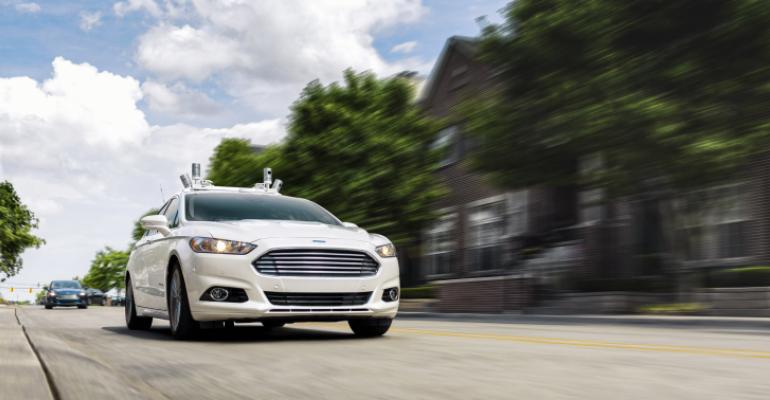NOVI, MI – If you think autonomous driving is decades away, think again, auto industry executives say.
“They are just wrong,” Ford Vice President Ken Washington says of the naysayers. “The evidence is all around us.”
Ford expects to deploy self-driving cars to public roads by 2021, but Washington, who heads the automaker’s research and advanced engineering group, notes it is happening today in a relatively advanced fashion on the streets of California, Arizona and Michigan.
“Uber is doing the same (testing),” he says of the upstart ride-hailing service. “Others are as well.”
There is reason for skepticism. Complex technological breakthroughs in sensing and radar equipment, as well as roadway mapping, still lie ahead. Consumer acceptance also remains a question, and issues around liability and the proper regulatory framework also must be sorted out.
The environment has led Ralph Nader, a longtime safety advocate and industry critic, to proclaim fully autonomous vehicles are at least a generation away. He says driving requires far too many judgement calls beyond the capability of future software, and the risk that driverless vehicles could be hacked is legitimate.
Washington thinks otherwise. “I’m very optimistic the target of 2021 is possible,” he tells the SAE Convergence conference here, citing the “amazing speed” of technological development.
“We have these super computers in our pockets,” he says, motioning to his smartphone. “You could have never predicted that 30 years ago.”
Jon Lauckner, chief technology officer at General Motors, agrees. GM also is testing driverless technology on public roads in the U.S.
“And I can assure you our plan is not to test them for the next 30 years,” Lauckner says.
Next year, GM will add automated highway-driving technology to the Cadillac CT6 large luxury sedan.
“Progress is going to come far faster than that,” he adds. “Not as fast as some of us hope, but certainly quite a bit faster than some of pessimists think.”
Jeff Owens, chief technology officer and executive vice president at global supplier Delphi, admits much work remains to be done, but the two traditional technology-deployment blockers of government regulation and product liability support autonomy.
“It’s going to be here very shortly,” says Owens, whose company is testing the technology in Singapore with an eye to field driverless prototypes for public use in the island country by 2019.
Going All In
Electronics giant Harman has gone all-in on autonomy in recent years, aggressively growing its in-house expertise and making strategic acquisitions to build out a connected-car platform as a path to the technology.
“It will be inside the 30-year window,” says Phil Eyler, executive vice president at Harman. But the transformation to a fully autonomous fleet of cars on U.S. roads will take time, he warns, due mostly to required refinement to the user experience.
“Engagement of a driver with a semi-autonomous car is a very big issue,” says Eyler, who joined Washington, Lauckner and Owens for a panel discussion on future automotive innovation. “The user experience side and how to safely manage engaging with a car that goes into (autonomous) mode will be a transitional process.”
Harman is developing a safety technology that monitors a driver’s pupils to determine his cognitive loads and then alert him to engage more, or less, with the automated vehicle.
“We’re looking at that transition as an opportunity to create solutions,” he says.
Whether to develop or buy technology is one big question automakers and suppliers must wrestle with on the road to automated driving. Ford and GM both have made a number of acquisitions to build out expertise in the field.
Lauckner says the days of solely developing technology in-house are long gone, because so much technical innovation emerges outside of the industry.
“It is not automotive in any way, shape or form,” Lauckner says. “So we can spend a lot of time working the old model, which is build it ourselves, or we can start collaborating either through equity investments, partnerships and acquisitions.
“It depends on the technology, but this is a model that is not traditional to the auto industry. It is a model you need to embrace if you want to move fast.”
Laukner says GM Ventures, an investment arm of the automaker that he runs, has a stake in about 20 companies and continually scouts for additional opportunities.
“Any other way will take a lot longer,” he says.
Washington says the decision to do it yourself or buy an organization with expertise depends on a particular company’s needs. But at the end of the day vehicle integration, or marrying up autonomous technology with a car platform, lies squarely at the feet of automakers and suppliers.
“That’s something we are really good at,” he says.





